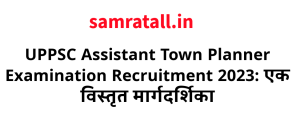Are you curious about pursuing a computer course but unsure where to start? Whether you’re a beginner looking to gain essential skills or someone aiming to enhance your existing knowledge, this article will provide you with a comprehensive guide on what a computer course entails and how to go about it. Let’s dive right in!
Table of Contents
- Introduction
- Understanding Computer Courses
- Different Types of Computer Courses (H1)
- Benefits of Enrolling in a Computer Course (H2)
- Steps to Start a Computer Course
- Self-Assessment and Goal Setting (H2)
- Choosing the Right Course (H2)
- Researching Course Providers (H3)
- Course Duration and Schedule (H3)
- Getting Started with the Course
- Course Curriculum Overview (H2)
- Learning Materials and Resources (H3)
- Hands-on Practice (H3)
- Staying Engaged and Progressing
- Setting a Study Routine (H2)
- Joining Study Groups and Forums (H3)
- Tracking Your Progress (H3)
- Overcoming Challenges
- Dealing with Technical Challenges (H2)
- Managing Time and Other Commitments (H3)
- Seeking Help and Support (H3)
- Successfully Completing the Course
- Final Projects and Assessments (H2)
- Certification and Recognition (H3)
- Conclusion
Introduction
In today’s digital age, computer skills have become indispensable. Whether you aspire to boost your career prospects or simply explore new horizons, enrolling in a computer course can open up a world of opportunities. From programming languages to graphic design and data analysis, the realm of computer courses is vast and varied.
Understanding Computer Courses
Different Types of Computer Courses
Computer courses encompass a wide range of subjects, catering to diverse interests and career paths. You can choose from programming languages like Python, Java, or C++, delve into web development, master graphic design tools, or even explore data science and artificial intelligence.
Benefits of Enrolling in a Computer Course
Enrolling in a computer course offers several benefits. It equips you with marketable skills that are in high demand, enhances your problem-solving abilities, and boosts your confidence in navigating the digital landscape.
Steps to Start a Computer Course
Self-Assessment and Goal Setting
Before embarking on a computer course journey, take time to assess your interests and set clear goals. Are you looking to acquire skills for a specific job role or pursue a passion project?
Choosing the Right Course
Research extensively to find a course that aligns with your goals. Consider factors such as course content, prerequisites, and the expertise of instructors.
Researching Course Providers
Look for reputable institutions or online platforms that offer the course you’re interested in. Read reviews, check course outlines, and ensure the provider meets your expectations.
Course Duration and Schedule
Determine the course duration and ensure it fits your schedule. Some courses are self-paced, while others have fixed schedules and deadlines.
Getting Started with the Course
Course Curriculum Overview
Once you’ve enrolled, familiarize yourself with the course curriculum. Understand the topics that will be covered and the order in which they’ll be taught.
Learning Materials and Resources
Gather all the required learning materials, which may include textbooks, online resources, and software tools. These resources will be your companions throughout the course.
Hands-on Practice
Apply what you learn through hands-on practice. Experiment with coding, design, or analysis tasks to solidify your understanding.
Staying Engaged and Progressing
Setting a Study Routine
Consistency is key. Set a study routine that suits your schedule, and allocate dedicated time for learning and practicing.
Joining Study Groups and Forums
Engage with fellow learners by joining study groups or online forums. Discussion and collaboration can enhance your learning experience.
Tracking Your Progress
Regularly assess your progress by completing quizzes, assignments, or mini-projects. This will help you identify areas that need more attention.
Overcoming Challenges
Dealing with Technical Challenges
Encounter technical issues? Don’t panic. Troubleshoot problems patiently, and don’t hesitate to seek help from instructors or online communities.
Managing Time and Other Commitments
Balancing a computer course with other commitments can be challenging. Prioritize tasks, manage your time efficiently, and avoid burnout.
Seeking Help and Support
If you find certain concepts difficult, ask for help. Instructors, peers, and online resources are valuable sources of assistance.
Successfully Completing the Course
Final Projects and Assessments
As you near the end of the course, you may be required to complete a final project or take assessments. Put your skills to the test and showcase your newfound knowledge.
Certification and Recognition
After successfully completing the course, you’ll likely receive a certificate of completion. This certification can boost your resume and demonstrate your expertise to potential employers.
Conclusion
Embarking on a computer course journey can be a fulfilling and rewarding experience. By following the steps outlined in this guide, you’ll be well-equipped to navigate the world of computer courses and emerge with valuable skills that can shape your future.
FAQs (Frequently Asked Questions)
- How do I choose the right computer course for my career goals?
- Can I enroll in multiple computer courses simultaneously?
- Is prior programming knowledge necessary for all computer courses?
- What are the advantages of online computer courses compared to in-person classes?
- How do I stay motivated throughout a lengthy computer course?








